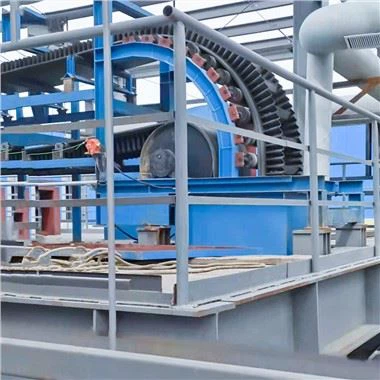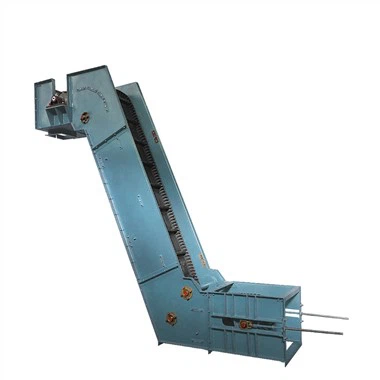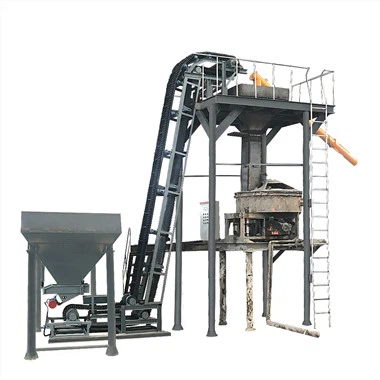Enclosed Sidewall Belt Conveyor
Introduction
The enclosed high-angle belt conveyor is a new and innovative conveying equipment that allows for large-angle conveying of materials, with a maximum inclination angle of 90 degrees. It is specifically designed for dust-proofing, leak-proofing, and environmental protection, making it an ideal option for industries that require such features.
This type of conveyor is composed of several key components, including the belt, driving device, roller, tensioning device, guiding device, support device, and cleaning device. The enclosed belt prevents any material from scattering or causing pollution. The driving device is an electric motor, and the roller and support device support and guide the belt. On the other hand, the tensioning device ensures that the belt is appropriately tense, while the guiding device maintains material stability on the belt. Finally, the cleaning device removes any debris or dirt that might accumulate on the belt surface.
Enclosed high-angle belt conveyor can be used in a variety of industries, including coal, electric power, chemical industry, building materials, and metallurgy. As a key piece of equipment, it is able to significantly improve production efficiency while reducing costs. By taking advantage of its unique design, industries can deliver materials with ease, safety, and efficiency, improving overall operations.
Structure

Application
In various industries such as coal, electric power, chemical industry, building materials, and metallurgy, the enclosed high-angle belt conveyor is widely utilized for material transportation. It is especially useful in scenarios requiring slope transportation and large-angle transportation. The conveyor plays a vital role in facilitating the transportation process.
Coal mines and coal chemical enterprises require efficient transportation of various materials such as raw coal, washed coal, coal slag, and coal ash.
In power plants, the transportation of coal powder, ash, and waste plays a crucial role. Coal powder, which is used as fuel, needs to be efficiently transported to the combustion chambers for energy generation. On the other hand, the ash produced from the combustion process needs to be carefully collected and transported to designated storage areas for proper disposal. Additionally, the transportation of waste generated in power plants requires special attention, as it must adhere to environmental regulations and be transported to suitable facilities for treatment or disposal. Ensuring the smooth and effective transportation of coal powder, ash, and waste is essential for the overall operation and environmental sustainability of power plants.
Transportation of fertilizers, salts, phosphates, powders, and granular materials is a crucial aspect in chemical enterprises. These materials play a significant role in the production and supply chain of various industries. Ensuring their safe and efficient transportation is essential for maintaining the overall productivity and profitability of chemical enterprises. Fertilizers, which are essential for agricultural practices, need to be transported in a manner that preserves their quality and nutrient content. Salts, phosphates, and other chemical compounds require careful handling to prevent any contamination or hazardous situations during transportation. Powders, on the other hand, require appropriate packaging and storage to minimize the risk of spillage or loss. Granular materials, like fertilizers and industrial chemicals, also require specialized containers and transportation methods to prevent any potential damage or leakage. Overall, the transportation of these materials requires adherence to strict safety regulations and the use of appropriate equipment and techniques to safeguard both the products and the environment. Chemical enterprises must prioritize the transportation process to ensure the seamless flow of materials and maintain their reputation in the market.
Transportation of cement, lime, sand, slag, and mineral powder is a crucial aspect for building materials enterprises. These essential materials play a vital role in construction projects. Proper transportation ensures the availability and timely delivery of these supplies to construction sites. Cement, which is commonly used in the construction industry, requires careful handling and transport due to its vulnerability to moisture and impact. Lime, on the other hand, is commonly used as a binding agent and also requires careful transportation to maintain its quality. Sand, an essential component in concrete, needs to be transported efficiently to meet construction demands. Slag, a byproduct of metal smelting, is used as an aggregate in construction projects, and its transportation is essential to ensure sustainable utilization. Lastly, mineral powder, also used in construction, needs to be transported safely to avoid any spillage or contamination. Overall, the transportation of these materials is crucial for building materials enterprises to fulfill their role in the construction industry effectively.
The transportation of various materials such as iron ore, steel slag, and bauxite is crucial in metallurgical enterprises. To ensure dependable material transportation in diverse production environments, the enclosed high-angle belt conveyor serves as an efficient solution. Its use not only enhances production efficiency but also mitigates costs. With the ability to rearrange the mentioned content, we can highlight how the enclosed high-angle belt conveyor facilitates reliable material transportation, thereby improving productivity and reducing expenses in metallurgical enterprises.
Technical Data
|
Belt width(mm) |
Height(mm) |
Handling capacity |
Particle size(mm) |
Tape speed(m/s) |
Angle(°) |
|
500 |
80 |
11~84 |
50 |
0.8~2.5 |
30~90 |
|
100 |
55 |
||||
|
120 |
60 |
||||
|
650 |
100 |
23~180 |
55 |
||
|
120 |
60 |
||||
|
160 |
80 |
||||
|
800 |
120 |
36~280 |
60 |
||
|
160 |
80 |
||||
|
200 |
100 |
||||
|
1000 |
160 |
45~500 |
80 |
||
|
200 |
100 |
||||
|
240 |
140 |
||||
|
1200 |
160 |
57~800 |
80 |
||
|
200 |
100 |
||||
|
240 |
140 |
||||
|
300 |
180 |
||||
|
1400 |
200 |
73~1000 |
100 |
||
|
240 |
140 |
||||
|
300 |
180 |
||||
|
400 |
250 |
Hot Tags: enclosed sidewall belt conveyor, China enclosed sidewall belt conveyor manufacturers, suppliers, factory
You Might Also Like
Send Inquiry
















